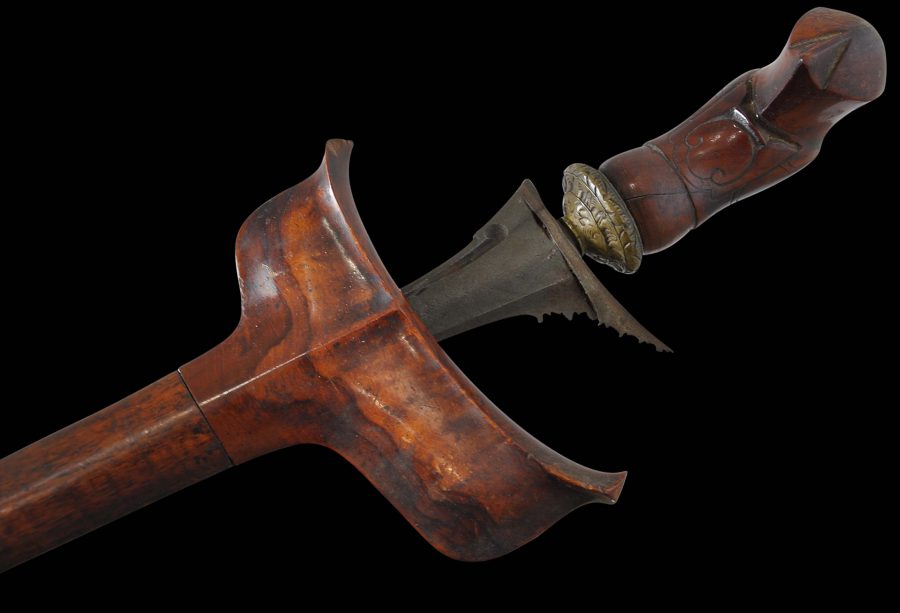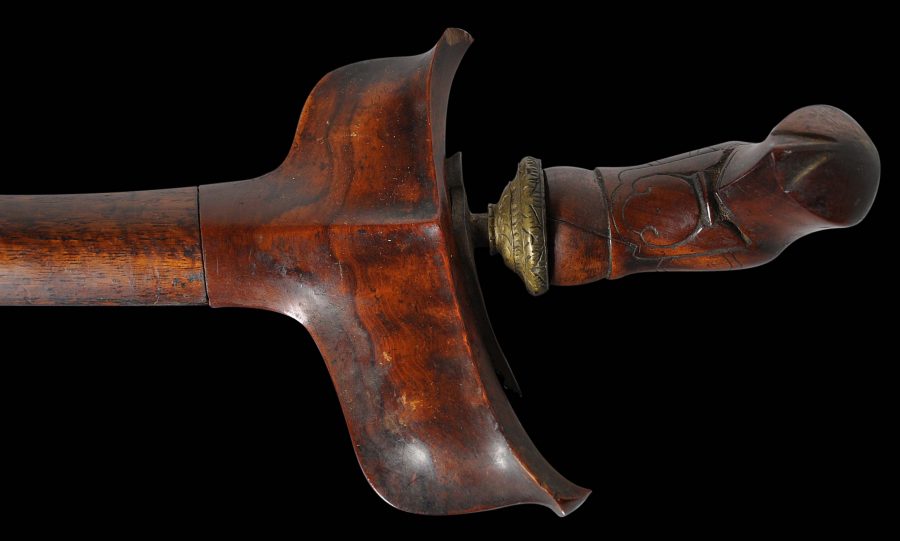Enquiry about object: 3217
Malay ‘Executioner’s’ Kris (Kris Panjang)
Sumatra, Indonesia or Kelantan, Malay Peninsula 19th century
length: 68cm, weight: 422g
Provenance
UK art market
This kris panjang from Sumatra or possibly Kelantan on the Malay Peninsula, has a long wooden scabbard of fine-grained, honey-coloured, lustrous wood. The top of the hilt has a separate piece of wood that is similarly lustrous and shaped like a boat’s keel.
The blade is thin, long, straight and double edged. It comes to a fine point, and is of damascened iron.
The hilt, from carved wood, is in a highly stylised garuda form. There is a brass hilt collar (which is loose and may not be the original).
Long krises such as these are commonly referred to as ‘executioner’s’ krises. Certainly, they functioned as status symbols and as a form of regalia for local rulers and sultans. According to Gardner (2009r, p. 27), the usual Malay way of execution was to make the victim squat and the executioner then drove a blade such as the example here down through the upper shoulder near the collar bone, towards the heart. The driving in of the blade would occur either quickly or slowly according to the sentence. The kris was driven through cotton wool or similar so that the blood would be soaked up because only the ruler was allowed to be the cause of blood being physically shed and spilled.
The example here is in fine condition. There is an old, light crack to the base of the hilt. It is closed and stable.
References
Gardner, G.B., Keris and other Malay Weapons, Orchid Press, 2009 (reprint of 1936 original).
Sibeth, A. (ed.), Being Object. Being Art. Masterpieces from the Collections of the Museum of World Cultures Frankfurt/Main, Museum der Weltkulturen Frankfurt am Main, 2009.
Van Zonneveld, A., Traditional Weapons of the Indonesian Archipelago, C. Zwartenkot Art Books, 2001.






